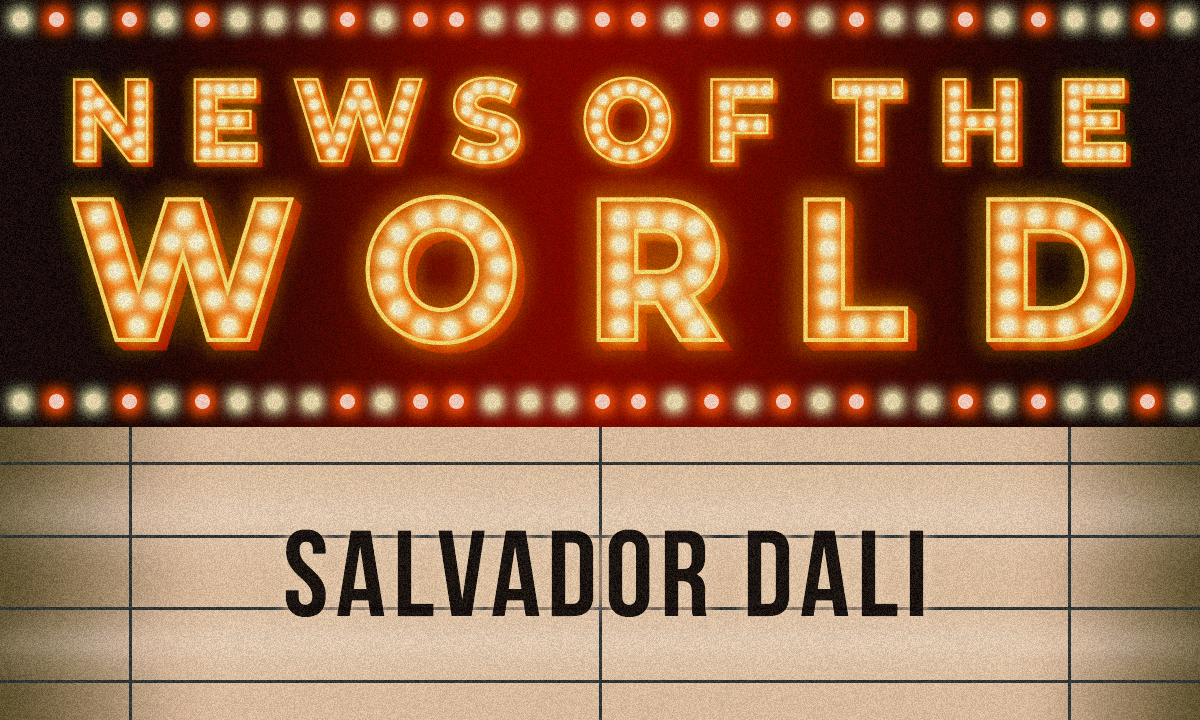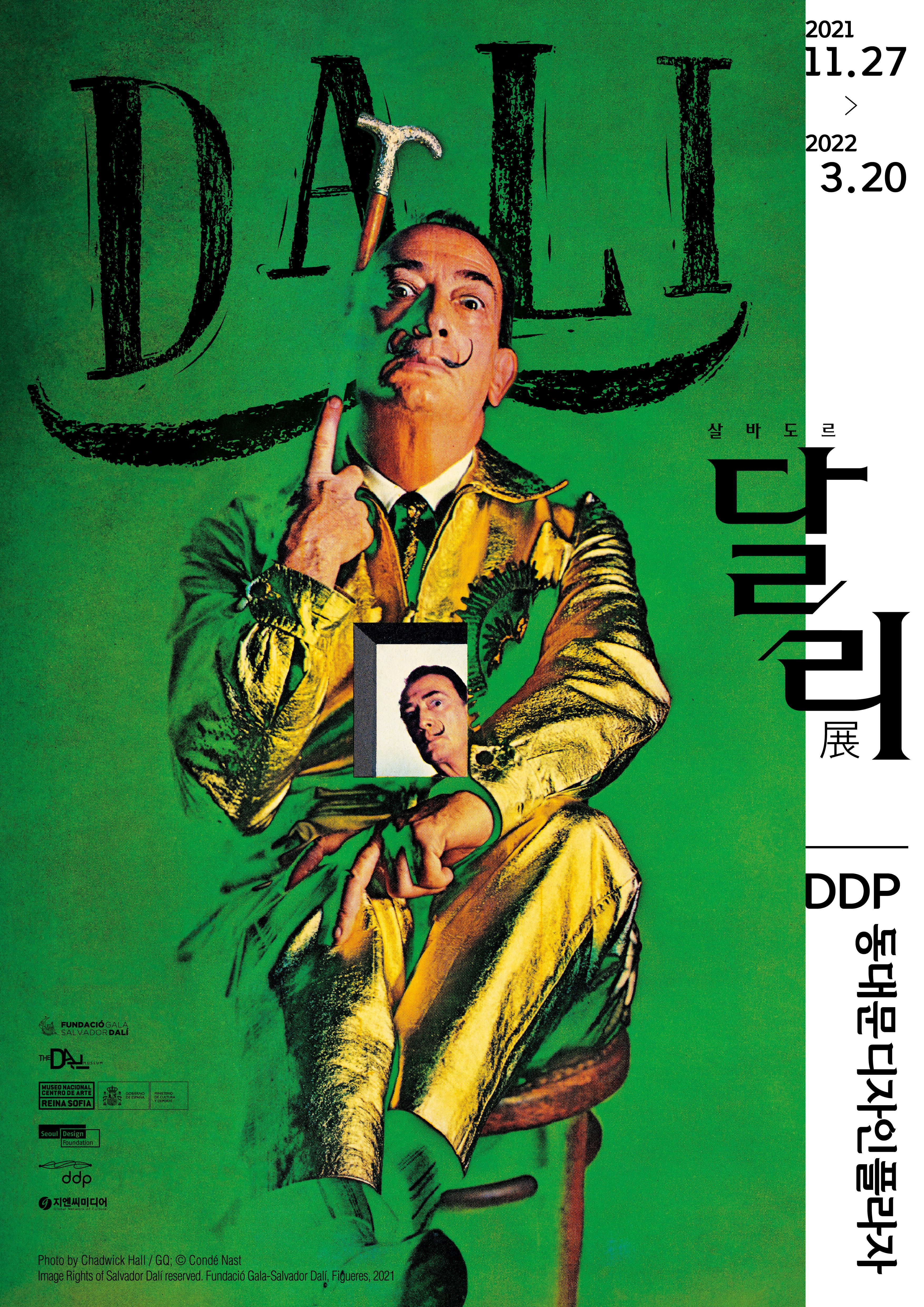
Korea’s first large-scale retrospective of Salvador Dalí, the Spanish master of surrealism widely recognized for his reality-defying works, will open at Dongdaemun Design Plaza this November. The exhibition, held in collaboration with the Salvador Dalí Foundation, showcases Dalí’s various inspirations through his world of art and his accomplishments. Let’s spend some time taking a closer look at the artist’s works, that may seem familiar yet somewhat abstruse, before setting foot in his exhibition.
Dalí is known not only for his art but also his trademark mustache and intense stare, and he was just as unique in his youth for his eccentric mannerisms and way of thinking as he was in appearance. Dalí proudly considered himself a genius and regarded his own life as a work of art. He was expelled from the Royal Academy of Fine Arts in Madrid for his disrespectful attitude in class, where he believed he had nothing to learn. Still, he followed this up immediately by opening his own successful exhibition and had a fruitful start as an artist. He gained fame through his interactions with other surrealist artists like André Breton, René Magritte and Max Ernst, whom he met in Paris by way of introduction from Joan Miró, another artist from the same part of Spain as Dalí. He continued working on his own as a self-professed surrealist artist even after rejecting Marxism and breaking away from the other surrealists. Dalí then moved to the United States, where he enjoyed even greater popularity and remained active in the arts, demonstrating an outstanding aptitude in such varied fields as religious painting, film, writing and sculpture.
Dalí left his mark in my areas, but it’s his works of surrealism for which he is best known. The artist aimed to establish his own surrealist technique and dubbed his process the paranoiac-critical method, which he described as an expression through a state of irrational knowledge akin to delirium. He worked images from his dreams into numerous themes and combined his obsessions and fantastic imagery to create a new type of work that merged unconsciousness and reality.
The Persistence of Memory, considered his best-known work, is a fascinating portrayal of surrealism using pictorial language. With its iconic melting clocks, the piece not only shows the power of the artist’s imagination, but the themes and symbolism behind the objects on the canvas can also be identified through the subject matter of this meaning-filled painting. You can see his oft-used double image technique on display in the way he renders each clock, originally a hard object, as more like runny cheese. Double images have their roots in dreams and hallucinations and is a method to trigger a multiplying effect that expresses a delusion where one object appears to overlap with another or be something else entirely. Dalí made frequent use of the effect in his works, so even when he painted specific realistic subjects they ended up looking unrealistic. Persistence of Memory also features a clock hanging from an olive tree—nominally a symbol of peace and hope, but here all withered away; the ants infesting another clock symbolize death and decomposition, adding to the work a sense of finite time and of death. The way the canvas seems to combine the different psychological worlds of unconsciousness and paranoia is reminiscent of the Freudian unconscious mind and has become a very popular subject of interest across various fields. In addition to his successes in the fine arts, Dalí left his mark via every kind of visual medium: He collaborated with directors Luis Buñuel and Alfred Hitchcock on The Andalusian Dog (Un chien andalou) and Spellbound, respectively, and designed the readily recognizable Chupa Chups logo.
For these reasons and more, Dalí, the man who looked at his own life as a work of art, is remembered as a genius of, and firm believer in art, and remembered by all as a veritable master. To that end, Dalí’s dreams and the fantasy of his world on show in the pieces at this exhibition traverse the eras to present us with an amazing experience that has the power to instill us with artistic inspiration even today.
-
 © Interpark ticket
© Interpark ticket
TRIVIA
Sigmund Freud
An Austrian physiologist and the founder of psychoanalysis. He presented his theory of the unconscious, which has had an ideological impact on many theorists. He argued that beneath human consciousness lies the outsized unconscious mind that exerts great influence on human behavior. He sought to prove the existence of the unconscious as well as its influence through dream analysis and psychological experiments.
Unauthorized reproduction and distribution prohibited.
- [NoW] A party for Andy Warhol2021.04.09

- [NoW] Lee Bul : Beginning2021.05.07

- [NoW] Picasso’s Eternal Passion2021.06.04

- [NoW] Richter’s colors and lights2021.07.02



- [NoW] Alice Dalton Brown2021.09.24
